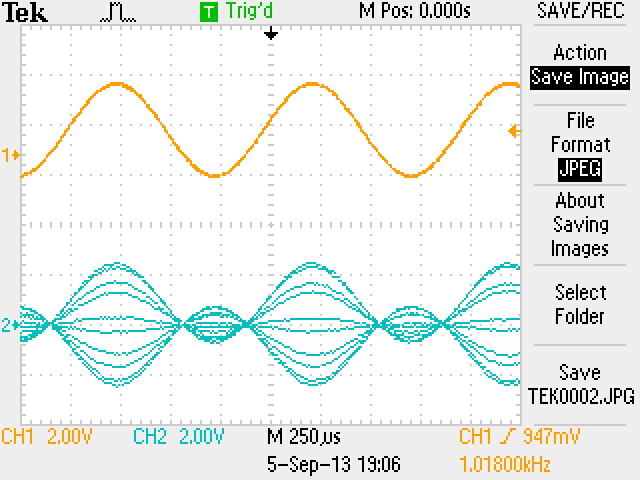In my lab experiment (http://www.ele.uri.edu/courses/ele436/labs/expA2.pdf), My amplitude modulated wave is not displaying the vertical lines-the high frequency waves of carrier (as shown in accompanied figure).
top- message signal; bottom = modulated wave(here overmodulated)
top- message signal;bottom = modulated wave(here m<1)
 What could be the possible reason for it. Has flickering display of oscilloscope caused the problem?. How it can be corrected?
What could be the possible reason for it. Has flickering display of oscilloscope caused the problem?. How it can be corrected?
